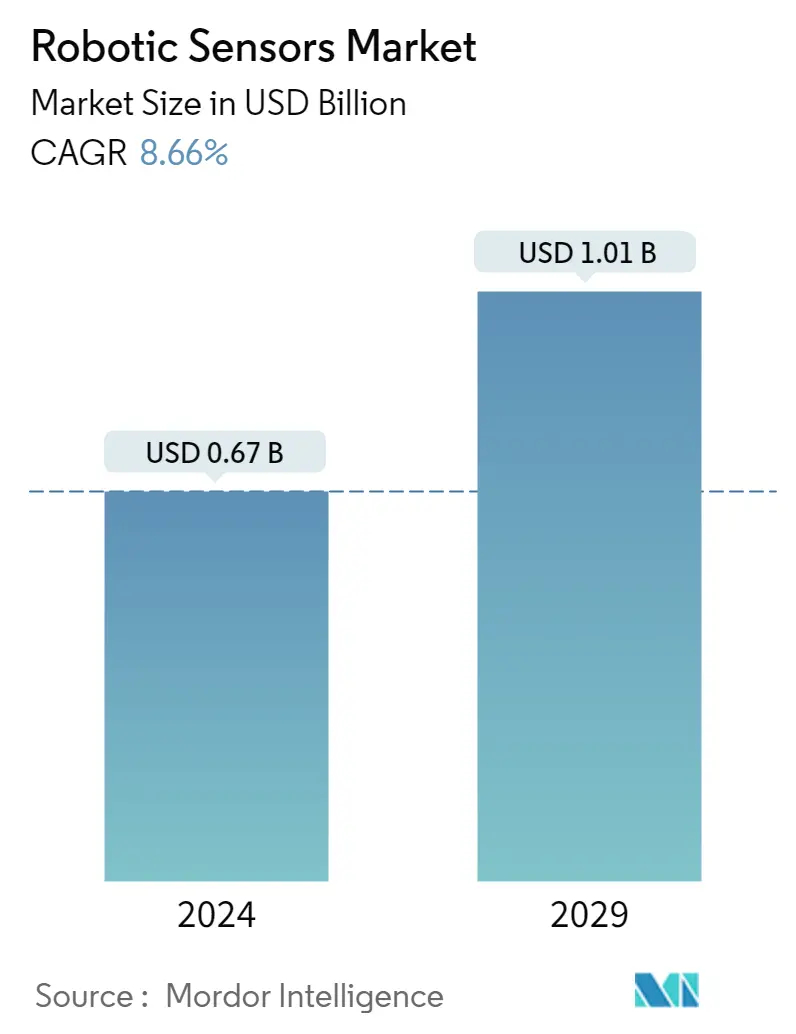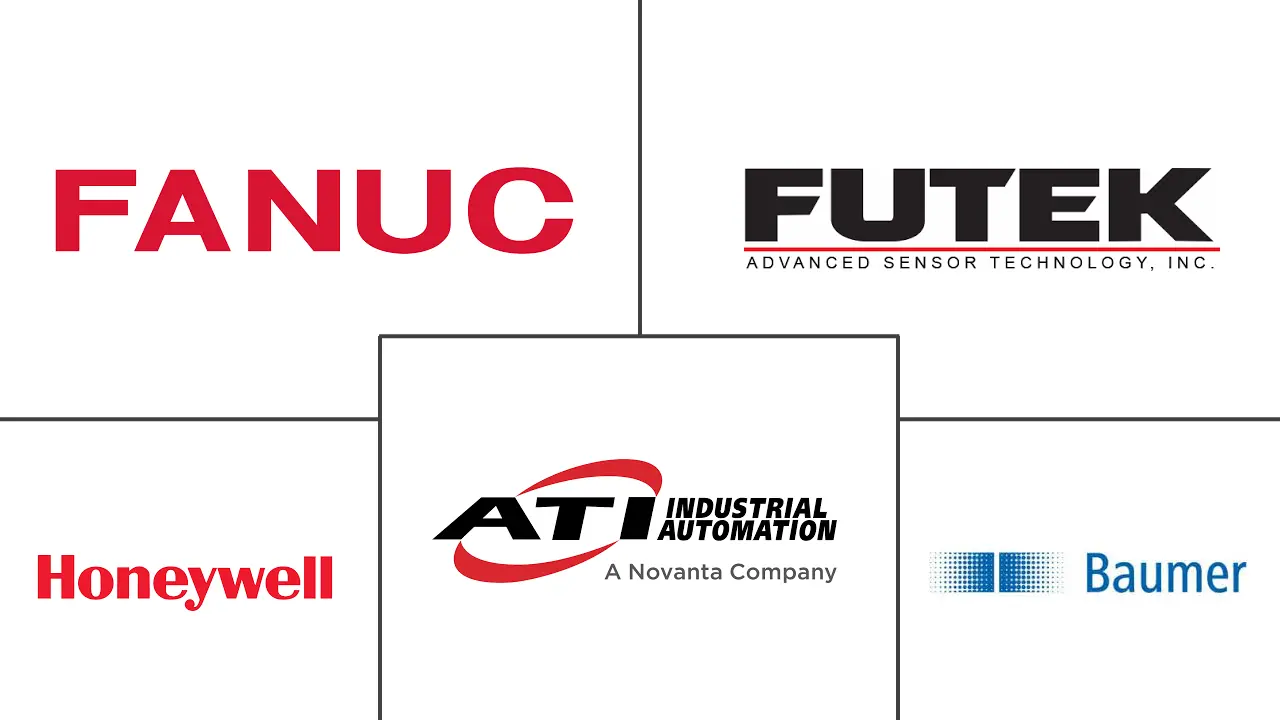Market Size of Robotic Sensors Industry

| Study Period | 2019 - 2029 |
| Market Size (2024) | USD 0.67 Billion |
| Market Size (2029) | USD 1.01 Billion |
| CAGR (2024 - 2029) | 8.66 % |
| Fastest Growing Market | Asia Pacific |
| Largest Market | Asia Pacific |
Major Players
*Disclaimer: Major Players sorted in no particular order |
Need a report that reflects how COVID-19 has impacted this market and its growth?
Robotic Sensors Market Analysis
The Robotic Sensors Market size is estimated at USD 0.67 billion in 2024, and is expected to reach USD 1.01 billion by 2029, growing at a CAGR of 8.66% during the forecast period (2024-2029).
The market studied is anticipated to grow due to the adoption of Industry 4.0 and IIoT solutions across the various end-user industries. Also, government investments in research and development and a growing emphasis on sustainability further drive the demand of the market studied. In addition, various players in the examined market are focusing on high-growth sectors such as automotive and manufacturing to keep their business growing in the market studied.
- Many factors, including rapid technological advancements in automation, artificial intelligence, energy storage, engineering, and machine learning, drive the growth of the market. The skill shortage is the primary factor impacting the increasing adoption of robots. Coupled with the lack of labor, the rising earnings of the workforce are also influencing the demand dynamics of robots across geographies. Moreover, the workforce needs to be trained frequently to adapt to new technologies. As a result, it drives organizations to adopt robotic systems, encouraging the market vendors to innovate on the components of the systems.
- Furthermore, manufacturing in developing and underdeveloped nations is currently undergoing a constant robotic evolution. However, workers are expected to continue to enter the service business, lowering wages and resulting in job growth and pay stagnation in the service sector rather than widespread unemployment, at least in the near and medium term. The prospect of digital technologies to automate routine tasks and replace human labor can sometimes appear like an existential threat to manufacturing in developing countries. Such predictions tend to be based on technical feasibility. However, the automation of jobs also depends on economic and institutional feasibility, and these factors can outweigh the technical aspects in underdeveloped countries.
- The growing adoption of robots for automation is expected to drive the robotic sensors market. Robots are machines programmed to perform tasks and are equipped with various sensors, actuators, and control systems. These sensors enable robots to interact with their environment and perform tasks effectively. In October 2022, according to robotics research published by the International Federation of Robotics, the food and beverage industry in the United States deployed 25% more robots last year, intending to reach 3,402 units by 2021. The higher level of hygiene provided by robotics, according to IFR, may have contributed to the surge in the aftermath of the COVID-19 pandemic.
- However, a high installation cost is the primary factor challenging the market's growth. In addition, the requirement of a highly skilled workforce to operate and maintain the automation or robotics infrastructure further adds to the overall cost, restraining mass adoption, especially in small and medium-scale industries.
- With the outbreak of the COVID-19 pandemic, various pharmaceutical manufacturers increasingly felt the substantial need to react promptly to the need for hospitals and pharmacies. The COVID-19 pandemic induced restrictions that forced the companies to operate with limited labor onboard, subsequently affecting the operational capacities of the companies across the world. Several enterprises started to invest in automation technologies to overcome this labor shortage and reduce their dependence on human labor. The increasing demand for robotic systems in the pharmaceutical industry propels the need for robotic sensors, positively influencing the market studied.
